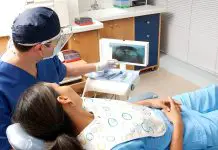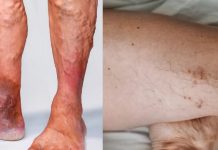Overview, Causes, & Risk Factors
Ptosis is a term that describes drooping or sagging of the upper eyelid.
What is going on in the body?
The upper eyelid can droop or sag for different reasons. Most cases are either due to a problem with the muscles that move the eyelid, or the nerves that attach to those muscles. Some of the causes of a sagging eyelid are life threatening, while others only alter the person’s appearance.
What are the causes and risks of the condition?
There are many potential causes of sagging of the upper eyelid, including:
Possible causes of acquired nerve damage include:
Most of the risks are related to the underlying cause. For example, if the cause is aging, the condition poses no risks. If the cause is cancer, death may occur.
Symptoms & Signs
What are the signs and symptoms of the condition?
A drooping eyelid is usually noticed by the affected person, or the parents of an affected child. The affected eye is usually less open than the normal eye, although the condition can occur in both eyes. Drooping may be the only symptom. All other symptoms are related to the underlying cause. In cases of nerve damage, blurry or double vision may occur and the pupil may be abnormally small or large compared to the other eye. If muscle weakness is the cause, there may be muscle weakness in other areas of the body.
Diagnosis & Tests
How is the condition diagnosed?
The affected person usually notices this condition. With children, the parents often notice. The healthcare provider will complete a history and physical exam. This may be all that is needed to determine the cause. In some cases, special testing may be needed. These may involve blood tests, special X-ray tests, or possibly a biopsy. In a biopsy, a small piece of tissue is removed from the body. A lab then examines the tissue sample.
Prevention & Expectations
What can be done to prevent the condition?
Good control of diabetes and high blood pressure can prevent some cases of a drooping upper eyelid. Lung cancer is a fairly uncommon cause of a drooping eyelid. This disease can usually be prevented by not smoking. Many cases cannot be prevented.
What are the long-term effects of the condition?
Most long-term effects are related to the underlying cause. Some cases of a droopy eyelid have no long-term effects. Other causes may result in death, such as cancer or an abnormally widened artery inside the skull.
In children younger than 8 years old, a sagging upper lid can be serious no matter what the cause. The child may not develop proper vision in the eye with the sagging lid. Without treatment, this can result in permanently reduced vision or even blindness. If this occurs, glasses will be unable to correct the problem. Prompt treatment prevents this long-term effect.
What are the risks to others?
There are no risks to others. This is not a contagious condition.
Treatment & Monitoring
What are the treatments for the condition?
This partly depends on the cause. For example:
Surgery generally involves tightening or shortening the muscles of the upper eyelid to physically pull the lid into normal position.
What are the side effects of the treatments?
All medications have possible side effects. These include allergic reactions, stomach upset and other side effects. Specific side effects depend on the drugs used. Any surgery carries a risk of infection, bleeding, and reactions to pain medication.
What happens after treatment for the condition?
In many cases, a person can return to normal activities. If surgery is performed, a person can go home shortly after the procedure. Recovery takes only a few days in most cases. Children and those with serious underlying causes need further monitoring.
How is the condition monitored?
Children need repeated eye exams before and after treatment to check for vision loss. Other monitoring depends on the underlying cause. In the case of injury or aging, no further monitoring is needed.
Article type: xmedgeneral














































